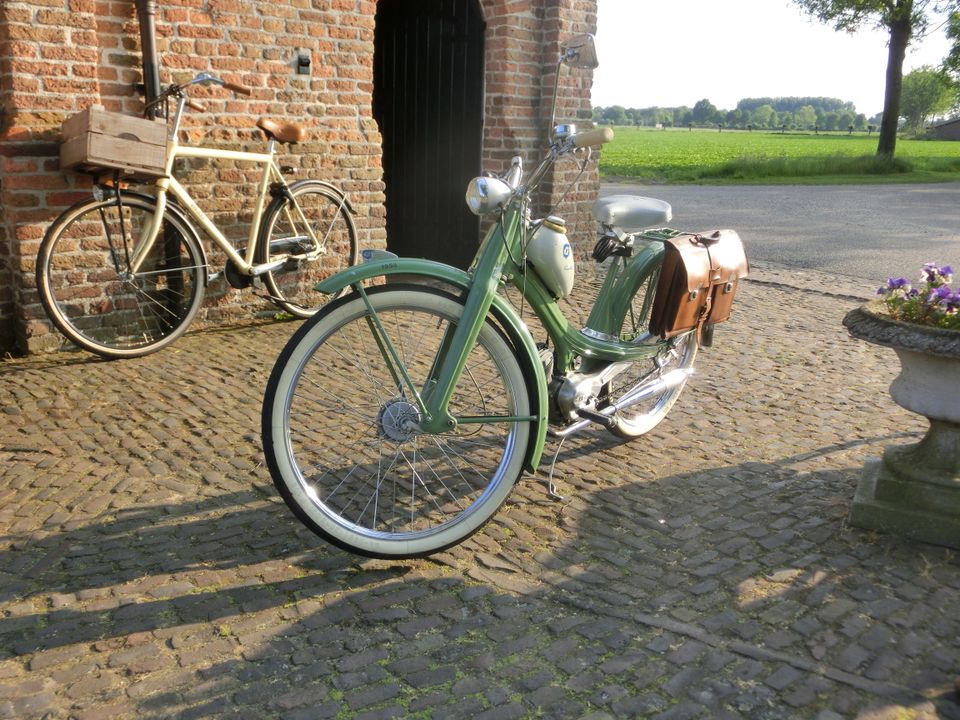Kapel Esdonks Kapelleke | Gemert
Contact
Esdonk in Gemert. Esdonks Kapelleke from the north
The Esdonks Kapelleke is believed to have been built in the 16th century. From 1555 to 1598, the Spanish king Phillips II was ruler of…
Esdonk in Gemert. Esdonks Kapelleke from the north
The Esdonks Kapelleke is believed to have been built in the 16th century. From 1555 to 1598, the Spanish king Phillips II was ruler of the southern Netherlands. Spanish soldiers passed through the country, and although the Teutonic Order, the possessors of both Gemert and Esdonk are respected, soldiers will certainly have passed through at times too. A Spanish major allegedly committed an unnamed sin in Esdonk, cultural-historical hamlet, and fell ill as punishment, covered in sores and pustules. However, he prayed to Mary Magdalene with such regret and repentance, promising to build a chapel, that he was cured in three days. In 1562, one finds the first mention of the Kapelleke. It was built on the contemporary border of the reclaimed lands of Esdonk and the surrounding wasteland (heath and swamp). Over time, a shift took place from the worship of the statue of Mary Magdalene to the worship of the wooden statue of Christ. This statue shows a reclining Christ after his death on the cross. At this statue, nails were and are offered, preferably rusty ones, to be cured of sores. For this, the crust of rust on the nail is symbolic. Still today, however, the chapel is also a place of pilgrimage, the only one in the Netherlands, for Mary Magdalene.
Mary Magdalene was part of the entourage of Jesus Christ. Supposedly, she had been a prostitute who repented. She was one of the most faithful followers of Jesus and the first to visit Jesus at his tomb. As the idea of the penitent sinner, she was very popular in the Baroque era where she is depicted, without exception, as a very beautiful woman with a luxuriant head of hair (with which she is said to have dried Christ's feet)-a woman who is said to have been the first to visit Jesus. There are a few churches and chapels dedicated to Mary Magdalene but Esdonks Kapelleke is the Netherlands' only place of pilgrimage to her. Every year on Good Friday, a large open-air mass is therefore held in front of the chapel. She is also the patron saint of gypsies, who often visited the chapel in the past, until the 1960s.
Earlier, reference was made to the sacrifice of nails. This is originally a pagan and very widespread phenomenon, as the church has adapted more pagan customs to its own theology. Possibly before the advent of Christianity, there was a so-called nail tree, or a pagan temple. Nails were hammered into the tree for healing against some disease. In Esdonk, that disease was linked to ulcers. In Christian custom, the nails were placed near an image of a crucified Christ. Because Mary Magdalene was strongly associated with the suffering Christ, a Christ statue was added in the late 16th, early 17th century. In the photo here, one can see the statue's berth behind the semicircular window at the side of the chapel.
Like the also medieval St Anthony's Chapel, the Esdonks Kapelleke originally had a straw roof. In 1695, the walls were built in stone. The whole thing has a Gothic appearance. The chapel has changed little since then. Because the chapel was located near the Peelrand fault, point water steadily seeped up under the chapel. Due to these damp conditions, restoration work had to be done many times. Today, this is what the Esdonks Kapelleke Foundation deals with.
Sources:
W. van Lierop, T. Thelen, Langs velden en wegen, 2006, Heemkundekring de Kommanderij, Gemert
P. van den Elsen, Esdonk, de geschiedenis van een kapelgehucht, 1981, Heemkundekring De Kommanderij, Gemert

